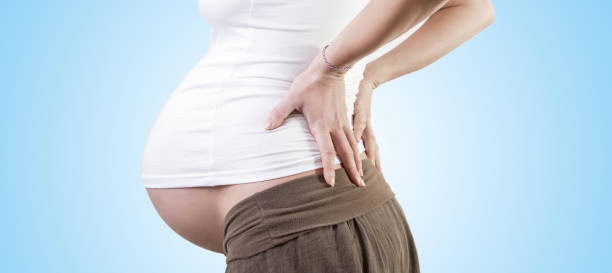The third trimester of pregnancy, which spans from week 28 to week 40, is a crucial stage for both the mother and the developing fetus. During this time, the baby continues to grow and mature, while the mother may experience a range of physical and emotional symptoms. Understanding what to expect in the third trimester and how to manage these symptoms is important for a smooth and healthy pregnancy.
Symptoms of Third Trimester
Shortness of breath: As the baby grows and takes up more room in the uterus, it can be difficult for the mother to take deep breaths and she may experience shortness of breath.
Heartburn: As the uterus pushes against the stomach, the mother may experience heartburn and indigestion.
Swelling: The mother may experience swelling in the feet, ankles, and hands due to the accumulation of fluid in the body.
Braxton Hicks Contractions: These are mild contractions that occur in preparation for labor. They are usually not painful and may feel like a tightening in the stomach.
Back Pain: As the baby grows, the mother’s center of gravity shifts, putting additional strain on the lower back.
Fatigue: The mother may experience increased fatigue in the third trimester due to the additional physical and emotional stress of pregnancy.
Mood swings: The mother may experience mood swings due to hormonal changes and the stress of preparing for the arrival of a new baby.
Trouble sleeping: The mother may have trouble sleeping due to the discomfort of her growing belly, frequent trips to the bathroom, and the anticipation of labor and delivery.
Treatment for Third Trimester Symptoms
Shortness of breath: To alleviate shortness of breath, the mother can try taking slow, deep breaths, and doing gentle exercises to improve her lung capacity.
Heartburn: To relieve heartburn, the mother can try avoiding foods and drinks that trigger her symptoms, eating smaller, more frequent meals, and avoiding lying down for a few hours after eating.
Swelling: To reduce swelling, the mother can elevate her feet, drink plenty of water, and avoid standing for long periods of time.
Braxton Hicks Contractions: Braxton Hicks contractions are not typically treated, as they are a natural part of the preparation for labor.
Back Pain: To relieve back pain, the mother can try using a heat pad, doing pelvic tilts and stretches, and using a supportive maternity belt.
Fatigue: To manage fatigue, the mother can try getting adequate sleep, eating a balanced diet, and engaging in light physical activity, such as walking.
Mood swings: To manage mood swings, the mother can try talking to friends and family, practicing relaxation techniques such as deep breathing or meditation, and seeking support from a mental health professional if necessary.
Trouble sleeping: To improve sleep, the mother can try sleeping on her side, using a supportive pregnancy pillow, and avoiding caffeine and other stimulants before bedtime.
In conclusion, the third trimester is a challenging but exciting time in pregnancy, with both physical and emotional changes. Understanding what to expect and how to manage the symptoms can help the mother have a healthy and positive pregnancy experience. It is important for the mother to prioritize self-care, communicate her needs to her healthcare provider, and seek support when necessary. With the right preparation and support, the mother and her baby will be ready for a safe and successful delivery.

 Home
Home Health
Health Diet & Nutrition
Diet & Nutrition Living Well
Living Well More
More












